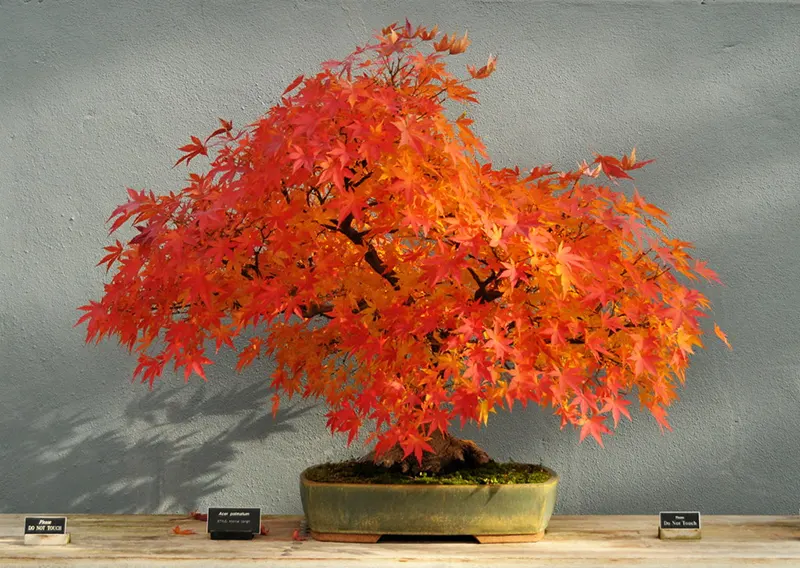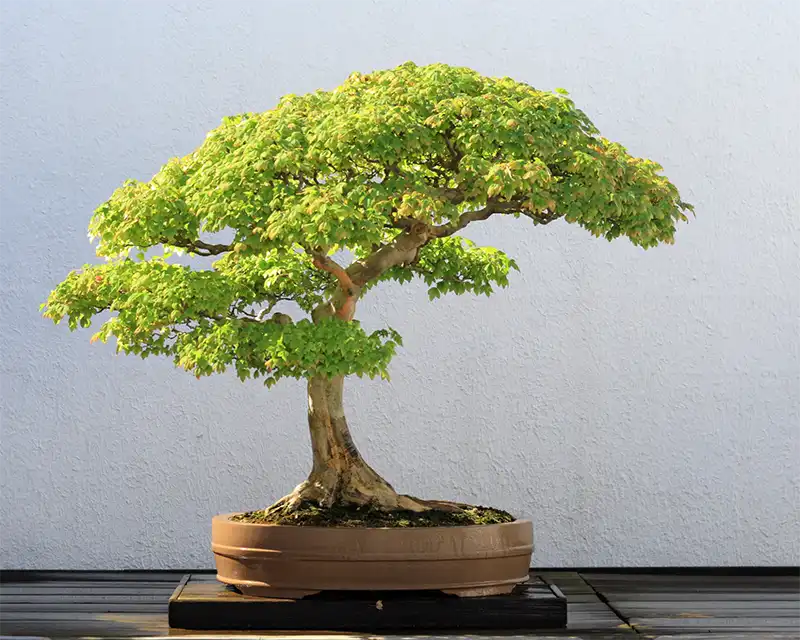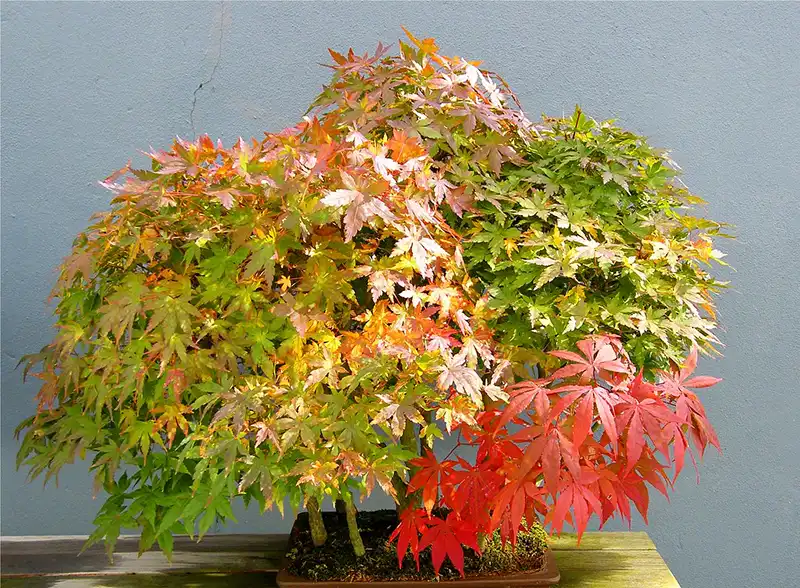How Do I Make My Japanese Maple Bonsai Grow Faster?
Bonsai is an ancient Japanese practice of growing ornamental dwarfed trees in containers. The trees are shaped into different forms using techniques designed to make them look like full-size trees. Japanese Maples (Acer palmatum) are among the most popular trees for Bonsai because of their beautiful red foliage. They are also easy to care for, making them ideal for beginners just learning the art of growing Bonsai trees. The delicate branches are also easy to shape because they’re flexible.
Image courtesy of Steven Severinghaus | License details
How Fast Does a Japanese Maple Usually Grow?
The Japanese Maple has a slow to medium growth rate. In its natural state, it will grow about 12″ to 24″ annually. The trees grow fastest when they’re young and slow down as they mature. The maple doesn’t require as much sunlight as most other trees used for Bonsai.
Speed up the Growth of a Japanese Maple Bonsai
There are four main aspects to look at when trying to speed up the growth of your Japanese Maple Bonsai.
Good soil
To thrive, Japanese Maple Bonsai need rich, well-draining soil with a pH of 5.5 to 6.5.
Use a good Bonsai soil mix to plant your Japanese Maple in, as they are specially formulated to help your Bonsai grow. The soil has to be deep enough to cover the tree’s roots. There must also be enough space in the planter to allow the roots to grow. Mulch your trees with shredded bark, preferably from a hardwood tree. This will protect the roots. Adding coffee grounds to the soil will add nitrogen to speed the tree’s growth.
Fertilizer
Providing your Japanese Maple with regular fertilizing encourages vigorous growth. Don’t fertilize your Japanese Maple until it’s more than one year old. Fertilizers rich in nitrogen are best for Japanese Maple trees. In spring and summer, you should feed your Japanese Maple Bonsai with an organic Bonsai fertilizer or other good liquid fertilizer every second week. In the fall, switch to a nitrogen-free fertilizer and cut back on feeding frequency. Never use a quick-release fertilizer. A slow or controlled release type is better. Avoid feeding for several weeks after repotting to allow the delicate roots to regrow without the risk of shock.
Watering
Bonsai trees need quite a lot of water to survive and thrive, and the Japanese Maple is no exception. In spring and summer, they might need to be watered every day. The trees will require less water in the fall and winter. The Bonsai tree should get enough water for the soil to remain moist. A drainage layer of rocks or pebbles will prevent the soil from becoming waterlogged.
Temperature and Humidity
As with most Bonsai trees, Japanese Maples grow well outdoors. Although they are native to Japan, they adapt well in many other areas, including North America, Europe, Korea, and China. Although they can cope with a certain amount of cold, they should be kept indoors in harsh winter climates.
Image courtesy of Sage Ross | License Details
Caring for Your Japanese Maple Bonsai
Getting your Japanese Maple Bonsai to grow faster also involves taking good care of the tree to encourage its growth. Like other Bonsai trees, Japanese Maples need certain basic elements of care to grow well. They need to be shaped, wired to maintain or direct their shape, pruned, and repotted to keep them healthy. Doing your utmost to keep your Japanese Maple Bonsai tree in optimal health will make it grow at a faster rate.
Wiring
It would be best to wire a Japanese Maple Bonsai in the summer while the tree has all its leaves. You wire the tree to help it grow into the shape you want. It also ensures that the tree’s structure is strong and can support future growth. The trees respond very well to wiring as their branches are flexible and easily shaped. Remember that wires should not remain on your tree for longer than six months at a time.
Pruning
Regular pruning is essential for a Bonsai tree’s aesthetic appeal and health. You should pinch new shoots back in the spring and summer to help shape your tree. You should also prune leaves in the tree’s growing season to help keep them small. Heavy pruning of branches is sometimes necessary if they are growing in the wrong direction or are crossing each other.
Potting and Repotting
The Japanese Maple Bonsai tree does not have to be repotted frequently when the tree is mature and well-established. Young trees benefit from yearly repotting to help refresh the soil and prune the roots, which also encourages new growth. Japanese Maple roots grow quickly and will need trimming when the tree is repotted. Cut back the roots, ensuring that the root bowl is more or less the same width as the tree. The best time to repot Japanese Maple Bonsai trees is in the spring, just before the buds have opened. The tree will then have enough time to recover from being repotted before it becomes dormant in the fall and winter.
Pests/Diseases
Japanese Maple Bonsai are susceptible to some pests and diseases. They have to be kept under control; otherwise, your tree won’t grow optimally and might even die. You should check the tree often to see if there are signs of pests or diseases. Treat aphids, powdery mildew, and verticillium wilt immediately if you want to keep your tree healthy.
Image courtesy of Stanley Zimny | License Details
Conclusion
The Japanese Maple Bonsai is a beautiful tree with many properties that make it ideal for even novice Bonsai enthusiasts to cultivate. It doesn’t grow very fast in its natural state. Make sure you provide your Bonsai tree with everything it needs to be healthy and flourish will help it grow faster than it would normally.






